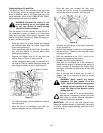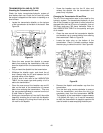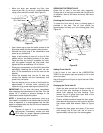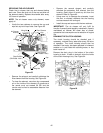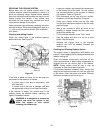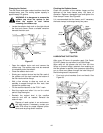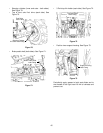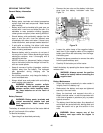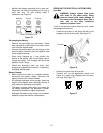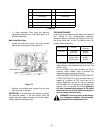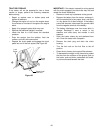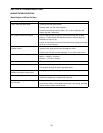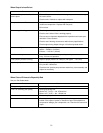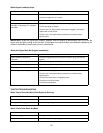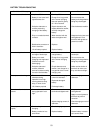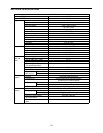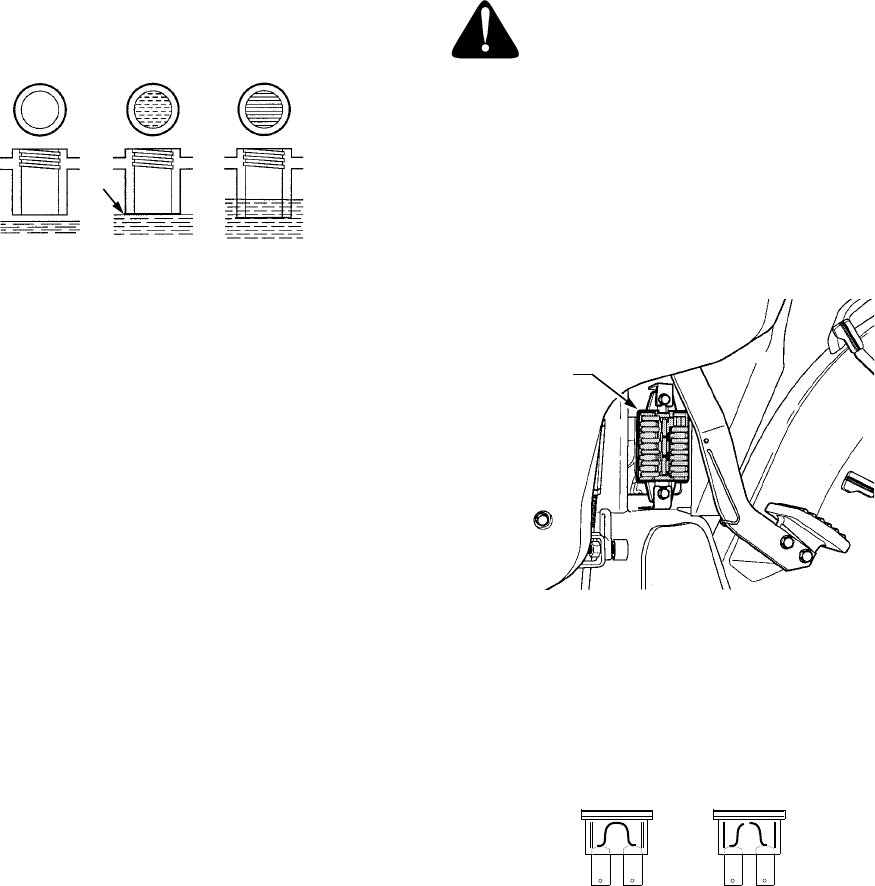
47
• Maintain the battery electrolyte level in each cell.
Keep each cell filled to the bottom of the ring in
each vent hole. Fill with distilled water if
necessary. See Figure 75.
Figure 75
Re-charging the Battery
• Remove the vent caps from the battery. Check
each cell and fill to the bottom of the ring in each
vent hole with distilled water.
• Connect the positive lead from the charger to the
positive battery terminal, then the negative lead
to the negative terminal.
• Avoid quick charging as it may shorten the
lifetime of the battery. Use a slow charge rate to
charge the battery. The charging rate should be
between 5 and 7 amps.
• Check the electrolyte level two hours after
charging is completed and correct it, if necessary,
by adding distilled water.
Battery Storage
• When storing the tractor for extended periods,
disconnect the battery cables. Removing the
battery from the unit is recommended.
• All batteries discharge during storage. Keep the
exterior of the battery clean, especially the top. A
dirty battery will discharge more rapidly.
• The battery must be stored with a full charge. As
the battery discharges, the electrolyte is weak-
ened and will freeze at a higher temperature.
• Recharge the battery every month in hot weather
seasons or every two months in cold seasons.
SERVICING THE ELECTRICAL SYSTEM FUSES
Fuse Box
WARNING: Always replace blow fuses
with fuses of the same rating. Using
incorrect fuses could cause damage to
the tractors wire harnesses. Never use a
wire, coin, or any other conductive
material to replace a fuse.
If one of the electrical circuits does not work, check
the appropriate fuses first.
• Locate the fuse box on the lower left side of the
pedestal near the clutch pedal. See Figure 76.
Figure 76
• Remove the cover from the fuse box.
• Carefully pull out the appropriate fuse(s) and
check for a blown fuse. Replace with the same
size fuse. See Figure 77.
Figure 77
Battery Electrolyte Level
Deficient Correct Excessive
To
Ring
Fuse Box
GOOD
BAD



